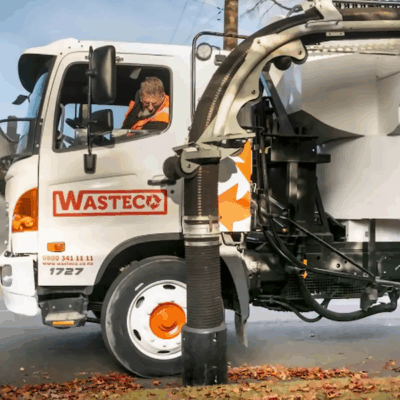How IoT primes a new smart product economy
A slew of newly connected gadgets that are controlled through mobile apps and feed personal data into the cloud are driving a wave of interest in the Internet of Things.
771
By Euan Davis.
A slew of newly connected gadgets that are controlled through mobile apps and feed personal data into the cloud are driving a wave of interest in the Internet of Things (IoT).
Home automation start-ups, established consumer electronics giants and large venture capital-funded technology companies are gearing up for competition as connected cars, homes and even smart cities emerge. However, examining the abstract world of IoT from the world of products reveals the extent to which a billion inter-connected devices and products are changing businesses as we know it.
Latest research from the Cognizant’s Centre for the Future of Work—a survey of over 200 global product design and innovation executives carried out in collaboration with the Economist Intelligence Unit—highlights practical steps that business leaders can take to benefit from the fast-accelerating trend of smart products—and the prizes on offer from the “Smart Product Economy”.
The Rise of Smart Products
Whether it is smartphones, smart cities, smart cars or even smart toothbrushes, smart technologies are finding their way into, and around, the everyday things we like to buy and use.
Witness the ‘smart’ Johnnie Walker bottle, which sends a personalised message to every customer who waves a smartphone in front of it, whether it is a promotional offer (pre-transaction) or a cocktail recipe (post-purchase, once embedded sensors detect the bottle has been opened). The bottle can be tracked across the supply chain, from manufacture to consumption. The opportunities unleashed by smart products are seemingly endless for any company seeking game-changing innovation or new levels of efficiency.
Adding smart technology to products can deliver game-changing innovation, enriched customer experiences and higher levels of efficiency. From R&D and manufacturing, through distribution and after-sales support, product data is changing the way products are built, sold and supported. Survey results reveal where companies are focusing their smart product investments.
Smart product development focus on two primary objectives: making industrial equipment smarter, through insights gained from embedding smart products into and around a manufacturing process; and making product packaging smart by highlighting the expiration status on commodities such as perishable foods, or reminding patients how and when to consume their medication. The third significant development opportunity focuses on making consumer devices smart, such as a fitness band that tracks personal wellness.
All these initiatives are set to change the dynamics between product creation and product sale dramatically because customer insight and business meaning are flowing through and around a product’s data.
The digital data emanating from a smart product or the processes that surround it is where the value—or alchemy—can be found. Imagine that smart whisky bottle exchanging data with a chilled glass to help uncover the perfect temperature for that drinking experience.
If properly instrumented and personalised, smart products become the sources of tremendous insight on product usage and status across the value chain, inform continuous product improvements and influence strategic moves into connected and/or radically adjacent markets.
By distilling and applying the insights gleaned from product intersections, manufacturers and other players in the value chain can strengthen customer relationships and create new and more profitable sales channels. Smart products can be instrumented to communicate with one another and with other products and services. Like the toothbrush that monitors and tracks the user’s brushing performance and provides feedback, or a jet engine that beams live engine data to ground staff, or a connected car that sends driver data to an insurance broker to enable dynamically priced car insurance. This looks and feels like a new product model for the digital age.
As product functions become more tightly controlled and optimised, we expect to see the emergence of innovative workflows (or product stacks) that connect the various products with the companies that own and operate them together.
Visualise the Smart Product Economy as an opportunity around the connected home, the connected car or the smart city. Each features a stack of products interacting with one another and blending into a unified entity that can be controlled through a single platform or interface by the home owner, driver or city planner. The result is a fully integrated and sometimes a fully automated solution.
It is happening today. Consider the manufacturing, healthcare or retail spaces, where inexpensive sensors and embedded software running across IP networks enable once inanimate products to sense, monitor, optimise and regulate themselves in increasingly autonomous and meaningful ways. Beyond the whisky bottle, check out GE’s smart turbine, to Procter & Gamble’s smart toothbrush, to Babolat’s sensor-embedded tennis racket.
Where to start?
Our research demonstrates that the process of giving a product a virtual identity triggers productivity gains and offers the potential for game-changing innovation. Product companies need to engage quickly to ensure they are not left behind. Already, smart products are emerging across industries and creating profound impacts on product development, manufacturing, marketing, sales, after sales and the customer experience.
New ‘digital components’ can be added to almost any object without dramatically increasing its price. Sensors and processors, software controls and data storage can be added, accessed through an interface like a dashboard or app. By using data and analytics, companies can see and predict a product’s behaviour and, by extension, the wants and needs of its user by interpreting the data and anticipating how a product could solve current and future needs.
Over the longer term, strategic opportunities for smart products will emerge around interconnected solutions and the partnerships that underpin them. This inevitable disruption to the product model, and the opportunity it creates, is a natural consequence of what Cognizant terms ‘code halo’ thinking—leveraging the information that surrounds people, organisations, products, and processes to build new digital revenue streams and new commercial models.
Euan Davis is Senior Director at the Centre for the Future of Work, Cognizant.






